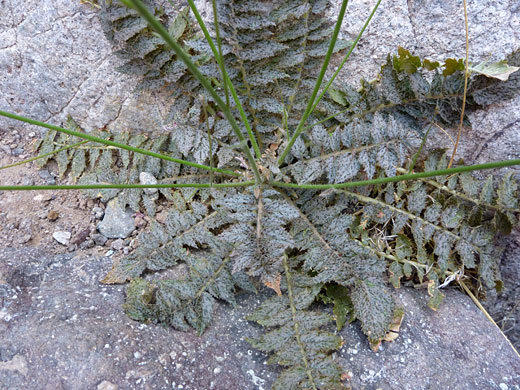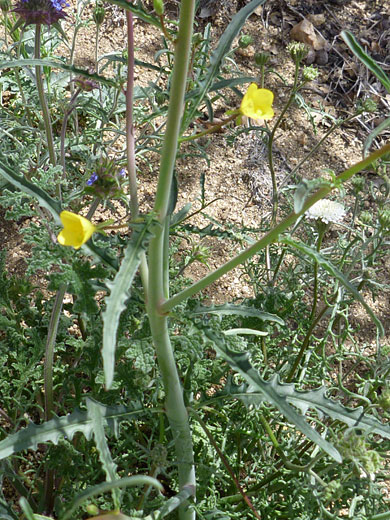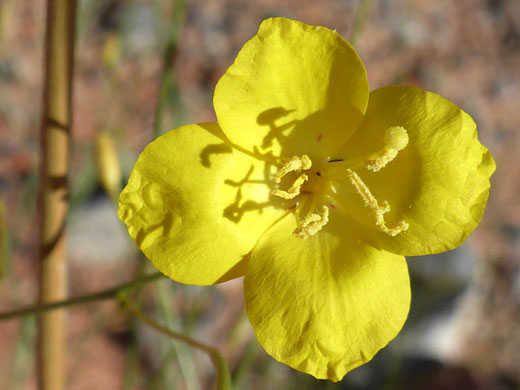Common name:
California suncup
Family:
Scientific name:
Eulobus californicus
Synonym:
Camissonia californica
Main flower color:
Range:
South California, south Nevada and most of Arizona
Height:
Between 2 and 5 feet
Habitat:
Grassland, scrubland, canyons, hillsides; up to 5,000 feet
Leaves:
Narrowly elliptical, grey-green, up to 6 inches long, pinnately divided into toothed lobes
Season:
February to June
The leaves of eulobus californica are quite distinctive; they grow mostly at the base, in a flat rosette, have a mottled, grey-green color, and are pinnately divided into irregularly-shaped pairs of lobes, which have sharp teeth along the edges. Stem leaves are fewer, smaller, alternately arranged, narrowly linear in outline, and have wavy-toothed edges. Leaves and stem are essentially hairless. Stems are stout and erect, reaching heights of 4 to 5 feet.
The widely spaced flowers are produced on short stalks at the top of the stem and from the upper leaf nodes; they are formed of four lightly glandular-hairy green sepals and four oval yellow petals, with red coloration near the base - either a single dot or a row of small flecks. Petals are about half an inch long. The flower center contains 8 yellow stamens and a spherical stigma, initially green, becoming yellow when mature, and rising higher above the petals.
The widely spaced flowers are produced on short stalks at the top of the stem and from the upper leaf nodes; they are formed of four lightly glandular-hairy green sepals and four oval yellow petals, with red coloration near the base - either a single dot or a row of small flecks. Petals are about half an inch long. The flower center contains 8 yellow stamens and a spherical stigma, initially green, becoming yellow when mature, and rising higher above the petals.
All Contents © Copyright The American Southwest | Comments and Questions | Contribute | Site Map






